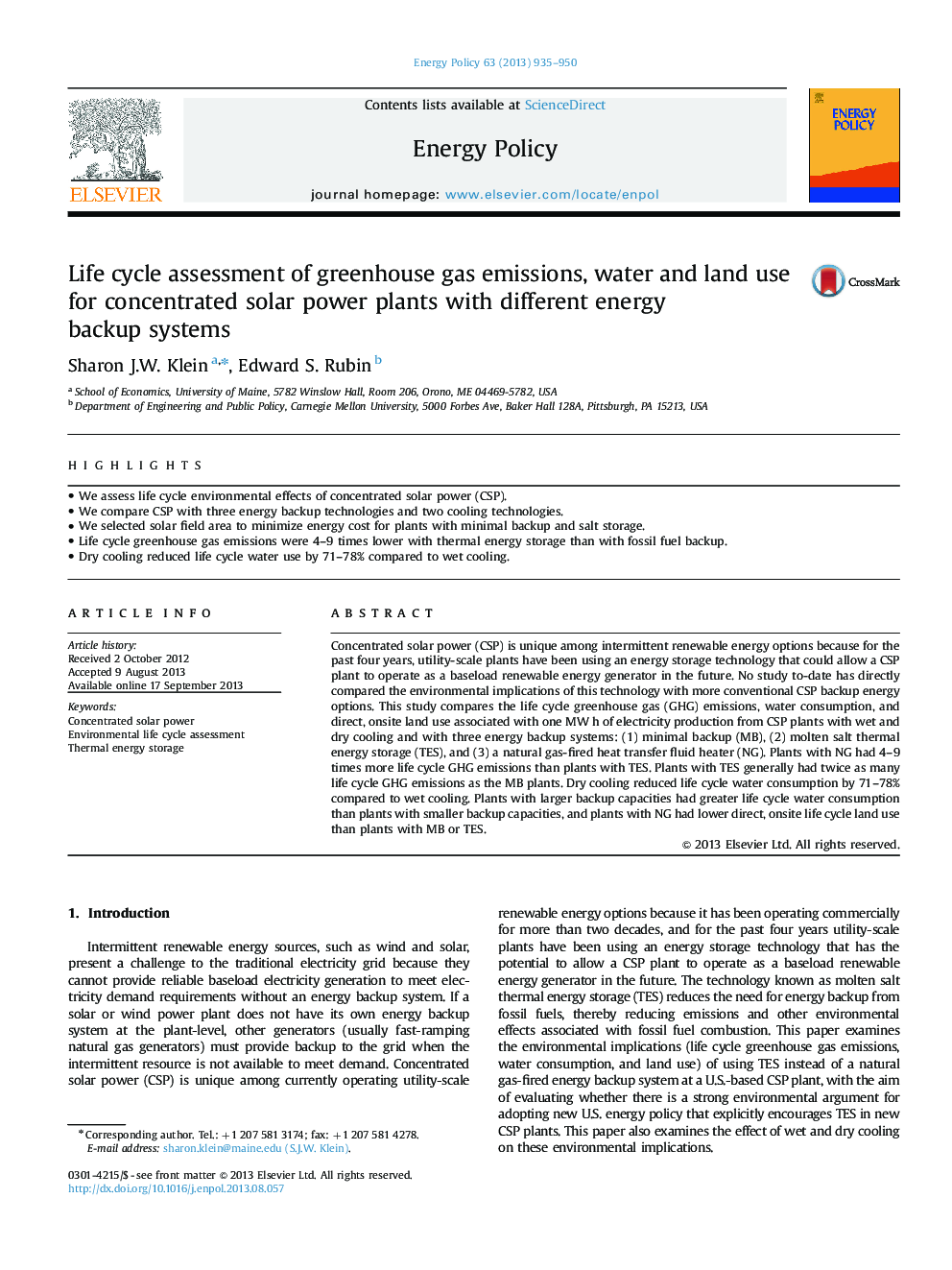| کد مقاله | کد نشریه | سال انتشار | مقاله انگلیسی | نسخه تمام متن |
|---|---|---|---|---|
| 7404033 | 1481295 | 2013 | 16 صفحه PDF | دانلود رایگان |
عنوان انگلیسی مقاله ISI
Life cycle assessment of greenhouse gas emissions, water and land use for concentrated solar power plants with different energy backup systems
ترجمه فارسی عنوان
ارزیابی چرخه زندگی از انتشار گازهای گلخانه ای، استفاده از آب و زمین برای نیروگاه های خورشیدی متمرکز با سیستم های مختلف پشتیبان گیری انرژی
دانلود مقاله + سفارش ترجمه
دانلود مقاله ISI انگلیسی
رایگان برای ایرانیان
کلمات کلیدی
قدرت خورشیدی متمرکز، ارزیابی چرخه زندگی زیست محیطی، ذخیره انرژی حرارتی،
موضوعات مرتبط
مهندسی و علوم پایه
مهندسی انرژی
مهندسی انرژی و فناوری های برق
چکیده انگلیسی
Concentrated solar power (CSP) is unique among intermittent renewable energy options because for the past four years, utility-scale plants have been using an energy storage technology that could allow a CSP plant to operate as a baseload renewable energy generator in the future. No study to-date has directly compared the environmental implications of this technology with more conventional CSP backup energy options. This study compares the life cycle greenhouse gas (GHG) emissions, water consumption, and direct, onsite land use associated with one MWÂ h of electricity production from CSP plants with wet and dry cooling and with three energy backup systems: (1) minimal backup (MB), (2) molten salt thermal energy storage (TES), and (3) a natural gas-fired heat transfer fluid heater (NG). Plants with NG had 4-9 times more life cycle GHG emissions than plants with TES. Plants with TES generally had twice as many life cycle GHG emissions as the MB plants. Dry cooling reduced life cycle water consumption by 71-78% compared to wet cooling. Plants with larger backup capacities had greater life cycle water consumption than plants with smaller backup capacities, and plants with NG had lower direct, onsite life cycle land use than plants with MB or TES.
ناشر
Database: Elsevier - ScienceDirect (ساینس دایرکت)
Journal: Energy Policy - Volume 63, December 2013, Pages 935-950
Journal: Energy Policy - Volume 63, December 2013, Pages 935-950
نویسندگان
Sharon J.W. Klein, Edward S. Rubin,
